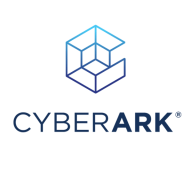

CyberArk Privileged Access Manager and IBM Resource Access Control Facility are competitive products in access management, each offering unique strengths. CyberArk emerges as a contender in pricing and customer support, while IBM's feature set provides a compelling case despite its higher cost.
Features: CyberArk offers real-time monitoring, advanced threat protection, and robust security layers. IBM provides strong integration capabilities, comprehensive compliance tools, and extensive data management options. CyberArk focuses on security, whereas IBM emphasizes integration and compliance, serving different organizational priorities.
Ease of Deployment and Customer Service: CyberArk provides streamlined deployment with comprehensive customer support, ensuring quick setup. IBM involves a more intricate deployment process but supplements this with detailed documentation and extensive resources. Where CyberArk gains from simplicity and responsiveness, IBM requires more initial setup but compensates with well-structured support.
Pricing and ROI: CyberArk presents attractive setup costs and effective security features contributing to a promising return on investment. IBM, with greater initial expenditure, offers long-term value through its integration and compliance solutions. CyberArk's affordability contrasts with IBM's potential for sustainable returns, catering to organizations focusing on long-term gains.

CyberArk Privileged Access Manager is a next-generation solution that allows users to secure both their applications and their confidential corporate information. It is extremely flexible and can be implemented across a variety of environments. This program runs with equal efficiency in a fully cloud-based, hybrid, or on-premises environment. Users can now protect their critical infrastructure and access it in any way that best meets their needs.
CyberArk Privileged Access Manager possesses a simplified and unified user interface. Users are able to manage the solution from one place. The UI allows users to view and manage all of the information and controls that administrators need to be able to easily access. Very often, management UIs do not have all of the controls and information streamlined in a single location. This platform provides a level of visibility that ensures users will be able to view all of their system’s most critical information at any time that they wish.
Benefits of CyberArk Privileged Access Manager
Some of CyberArk Privileged Access Manager’s benefits include:
Reviews from Real Users
CyberArk Privileged Access Manager’s software stands out among its competitors for one very fundamental reason. CyberArk Privileged Access Manager is an all-in-one solution. Users are given the ability to accomplish with a single platform what might usually only be accomplished with multiple solutions.
PeerSpot users note the truly all-in-one nature of this solution. Mateusz K., IT Manager at a financial services firm, wrote, "It improves security in our company. We have more than 10,000 accounts that we manage in CyberArk. We use these accounts for SQLs, Windows Server, and Unix. Therefore, keeping these passwords up-to-date in another solution or software would be impossible. Now, we have some sort of a platform to manage passwords, distribute the inflow, and manage IT teams as well as making regular changes to it according to the internal security policies in our bank."
Hichem T.-B., CDO & Co-Founder at ELYTIK, noted that “This is a complete solution that can detect cyber attacks well. I have found the proxy features most valuable for fast password web access.”
In 1976, IBM set the standard for security products when RACF was introduced!
From the beginning, the RACF Development Team has proudly brought you RACF, the premier product for securing your most valuable corporate data. Working closely with your operating system's existing features, IBM's award-winning Resource Access Control Facility (RACF) licensed program provides improved security for an installation's data. RACF protects your vital system resources and controls what users can do on the operating system.
You decide which resources you want to protect and which users need access to them. RACF provides the functions that let you:
Resource Access Control Facility offers the following features:
Access Control: RACF allows administrators to define access controls for various system resources, including datasets, programs, transactions, and system commands. It enables granular control over who can access specific resources and what actions they can perform.
User Authentication: The solution supports multiple authentication methods, such as passwords, digital certificates, smart cards, and biometrics. It ensures that only authorized users with valid credentials can access the system.
Authorization: Users are provided with fine-grained authorization capabilities, allowing administrators to assign and manage permissions for individual users or groups. It enables the definition of resource-level and data-level access controls based on user roles and responsibilities.
Auditing and Logging: RACF generates detailed audit logs that capture security events, including successful and failed access attempts, resource modifications, and policy violations. These logs are essential for compliance auditing, security analysis, and incident investigation.
Secure Password Management: The product includes features for enforcing password policies, such as minimum length, complexity requirements, and password expiration. It supports password encryption and hashing to protect sensitive credentials.
Encryption and Data Protection: The solution provides encryption capabilities to protect sensitive data stored on mainframe systems. It supports encryption algorithms and cryptographic protocols for safeguarding data confidentiality and integrity.
Integration with External Authentication Systems: Users can integrate it with external authentication systems, such as Lightweight Directory Access Protocol (LDAP) or Active Directory, allowing them to leverage existing directories for authentication purposes.
Resource Monitoring and Control: It enables real-time monitoring and control of resource accesses, as well as providing alerts and notifications for suspicious activities, allowing administrators to respond promptly to potential security threats.
Compliance and Regulatory Support: RACF helps organizations meet regulatory compliance requirements by providing the necessary controls, audit trails, and reporting capabilities. It supports compliance frameworks such as Payment Card Industry Data Security Standard (PCI DSS) and General Data Protection Regulation (GDPR).
Administration and Management: The solution offers a comprehensive set of administration and management tools for configuring, maintaining, and monitoring the security environment. It provides utilities for managing user accounts, defining security policies, and performing system-wide security administration tasks.
Some of the benefits that IBM RACF can offer its users are:
Enhanced security
Access control management
Authorization and authentication capabilities
Centralized control over resource access
Fine-grained access control policies
Audit trail and monitoring features
Compliance with regulatory requirements
Protection against unauthorized access
Segregation of duties
Efficient resource allocation and utilization
We monitor all Mainframe Security reviews to prevent fraudulent reviews and keep review quality high. We do not post reviews by company employees or direct competitors. We validate each review for authenticity via cross-reference with LinkedIn, and personal follow-up with the reviewer when necessary.